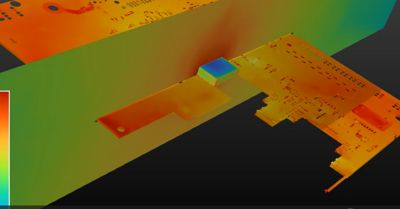-
-
Access Free Student Software
Ansys empowers the next generation of engineers
Students get free access to world-class simulation software.
-
Connect with Ansys Now!
Design your future
Connect with Ansys to explore how simulation can power your next breakthrough.
Countries & Regions
Free Trials
Products & Services
Learn
About
Back
Products & Services
Back
Learn
Ansys empowers the next generation of engineers
Students get free access to world-class simulation software.
Back
About
Design your future
Connect with Ansys to explore how simulation can power your next breakthrough.
Free Trials

In the fast-paced world of product development, precision and speed are everything. For engineers working on electronic systems, electronic computer-aided design (ECAD) is the backbone of that process. Whether you're developing wearables, automotive electronics, or aerospace systems, ECAD ensures every connection is made with confidence, from concept to creation.
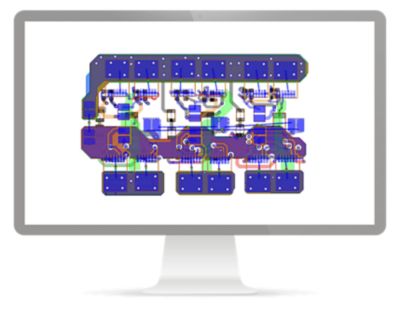
Electronic computer-aided design (ECAD) layout of a complex printed circuit board (PCB) in Ansys Maxwell software
What Is Ansys Maxwell Software?
Developed for demanding applications, Maxwell software delivers robust low-frequency electromagnetic analysis, accelerating development cycles and meeting the growing demand for power and performance in electric machines, magnetic sensors, wireless chargers, power supplies, and more.
Maxwell software is also widely adopted across many electronics applications, including:
- Electromagnetic interference and compatibility (EMI/EMC) analysis for shielding effectiveness, crosstalk suppression, and regulatory compliance
- Power converter design and validation for systems such as onboard chargers, auxiliary power units, and inverter powertrain operation, including high-frequency electronic transformers
- Electrothermal simulation for cooling system design and thermal management of critical components, including inverter power modules, busbars, and power cables sized for specific load conditions
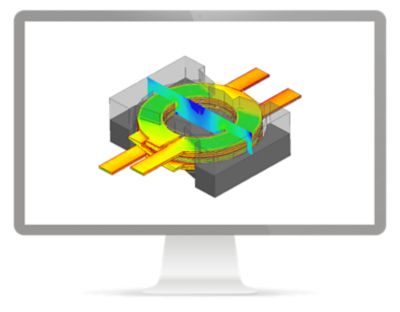
A simulated high-frequency electronic transformer showing current density in the winding and flux density in the cut plane
What Is Design Layout for ECAD in Maxwell Software?
While industry-leading tools like Ansys SIwave software, the Ansys HFSS solution, and Ansys Q3D Extractor software have long set the standard in printed circuit board (PCB) design and analysis. Maxwell software enhances Ansys' existing high-frequency tools by adding powerful low-frequency capabilities, making a significant impact in the electronics market with its unmatched ability to solve — with efficiency and precision — complex low-frequency electromagnetic field challenges in PCB design.
PCB layout, often referred to as electronics CAD (ECAD), presents significant complexity in both geometry and scale. Recognizing this, Ansys seamlessly integrated the 3D Layout for ECAD capability into the Ansys Electronics Desktop (AEDT) platform. This advancement empowers high- and low-frequency magnetic solvers to handle intricate PCB models with exceptional agility, streamlining magnetic analysis and pushing the boundaries of what's possible in PCB design.
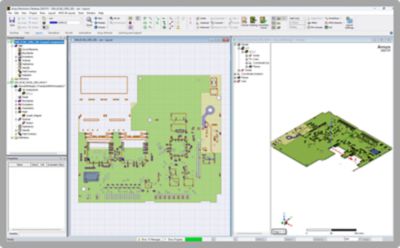
Maxwell software with the design layout for ECAD capability integrated into the Ansys Electronics Desktop (AEDT) platform
Going Further With ECAD-MCAD Integration
The convergence of ECAD and mechanical CAD (MCAD) is crucial in today's design landscape. Engineers in consumer electronics companies are increasingly adopting Maxwell ECAD-MCAD to import both electrical data (e.g., PCB layouts) and mechanical data (e.g., permanent magnets, power magnetic components, heatsinks, and connectors) together.
Maxwell software simulates electromagnetic behavior (e.g., fields, forces, losses, inductance, and capacitance) with accurate physical representations of both the board and other critical components. This is especially crucial for electronic transformers, sensors, inductors, and wireless components.
Permanent magnet near a PCB: current density (J) and cut plane of the resulting magnetic flux density (B)
Key Benefits of Design Layout for ECAD Integration in Maxwell Software
Maxwell software specifically addresses issues in rigid and flexible PCBs, such as:
- inductive magnetic coupling (EMI/EMC)
- thermal performance
- current sharing in parallel traces
- acoustic noise and vibration
Acoustic noise and mechanical vibration in PCBs can originate from alternating currents (AC) in adjacent traces or from external magnetic fields, including those produced by proximate permanent magnets interacting with PCB components or traces.
Having the 3D Layout design capability in Maxwell software enables the following key benefits:
- Accelerated time to market: This ability in Maxwell software streamlines simulation workflows and reduce iteration cycles, enabling faster validation and deployment of complex electronic systems.
- Unmatched scalability: From simple development boards to densely populated, multilayer high-speed PCBs in mission-critical applications, Maxwell software’s design layout for ECAD capability scales seamlessly to meet the demands of any project.
- Uncompromising design accuracy: Accuracy is non-negotiable. Maxwell software ensures geometric and electromagnetic fidelity via automatic adaptive mesh refinement, optimizing mesh accuracy and efficiency for the underlying physics.
Applications for PCBs in Maxwell Software
Maxwell software delivers modeling and design capabilities specifically tailored for electronics. It enables engineers to address increasing power density and performance demands while reducing design cycle times.
This is achieved through accurate simulation of key integrated components using ECAD and MCAD data, along with appropriate material characterization. Maxwell software supports the modeling and analysis of:
- Inductive coupling between PCBs
- Coupling between PCBs and magnetic components or EMI filter elements
- Influence of permanent magnets on PCBs
- Power modules in converters and inverters, utilizing advanced wide-bandgap semiconductors like silicon carbide (SiC) and gallium nitride (GaN)
Applications in Consumer Electronics and Smart Devices
Engineers in consumer electronics and smart device companies utilize the ECAD-MCAD capability in Maxwell software to design the intricate PCBs found in smartphones, wearables, and other smart devices. The ECAD-MCAD capability can solve complex integration challenges, including the precise placement of PCBs, permanent magnets, sensors, and batteries within constrained packaging volumes while simultaneously optimizing thermal management, ensuring effective EMI mitigation and maintaining high PCB reliability.
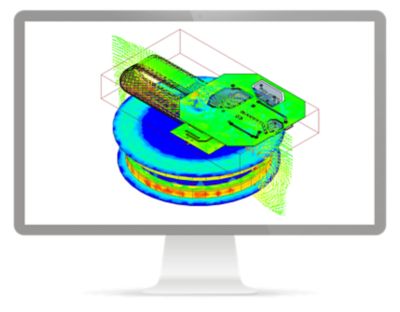
Electromagnetic interference (EMI) in a smartwatch with a flexible PCB and wireless charging system, showing magnetic flux density contours and vectors
By leveraging Maxwell software’s multiphysics simulation environment, engineers can more accurately model the interaction among electrical, magnetic, mechanical, and thermal domains to ensure reliable and efficient system performance under real-world operating conditions.
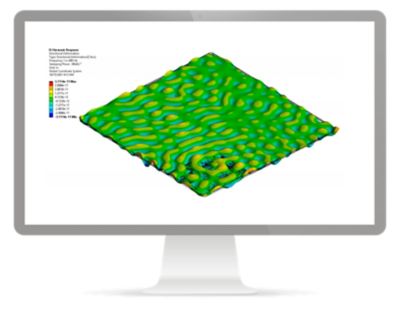
A PCB vibration analysis from electromagnetically induced forces
With the integrated design layout for ECAD capability in Maxwell software, engineers are now equipped to resolve complex PCB design issues that were once difficult to manage.
Discover the Engineering Payoff
In today’s competitive engineering landscape, Maxwell ECAD-MCAD is more than a tool — it is a strategic advantage. It enables you to create precise, reliable, and innovative electronic products. From first sketch to production-ready board, it empowers you to design smarter, faster, and more confidently.
By combining ECAD and MCAD, engineers gain a complete, physically accurate model — accelerating product validation, minimizing costly late-stage changes, and ensuring first-pass success. The ECAD-MCAD collaborative integration in Maxwell software is your partner in innovation.
To learn more, watch the “2025 R1 What’s New in Ansys Maxwell Software” videos for consumer electronics and transportation electronics and check out the Magnetics and Consumer Electronics Design webinar series.
The Advantage Blog
The Ansys Advantage blog, featuring contributions from Ansys and other technology experts, keeps you updated on how Ansys simulation is powering innovation that drives human advancement.


